You are here
Sensor network for bat detection
A network of BatCorders continuously registers bat activity and provides information on the bat species and behaviour.
Scientific background
Acoustic monitoring is a powerful technique for learning about the ecology of bats. Bat recorders provide continuous registration of bat activity by recording echolocation calls of passing bats. Since the bat calls are highly reliable taxonomic features, the acquired data can be used to estimate diversity and relative abundance of the occurring species. The generated data provides a basis for ecological and behavioral research of the bat species occurring in our coastal and marine areas.
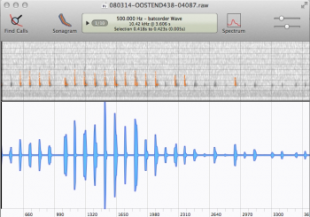
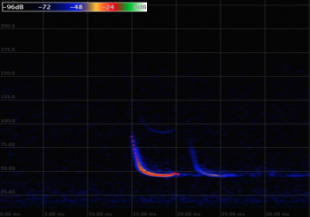
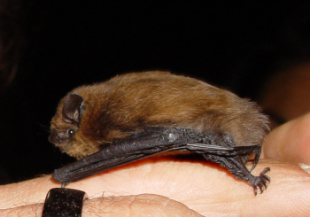
Left: Oscillogram of recording at Marine Station Ostend (March 2014) - Middle: Full spectrum sonogram of bat echolocation calls (Common pipistrelle) - Right: Common pipistrelle [Pipistrellus pipistrellus (Schreber, 1774)] (Source: Wikipedia, Photo by: Mnolf)
Infrastructure
Currently four ecoObs BatCorders are installed (see map below for the BatCorder locations):
- A GSM BatCorder at the premises of the Marine Station Ostend (MSO), near the dunes of the right bank of the Ostend harbor entrance (installed in March 2014, solar powered)
- A standard BatCorder on one of the C-power wind turbines (I5) (installed in October 2014) (also a web cam and WIFI device were installed here).
- A GSM-BatCorder installed on the railing of the lighthouse in Nieuwpoort, in the estuary of the Ijzer river.
- A GSM-BatCorder attached to a bird observation hut in the nature reserve 't Zwin. This batcorder is linked to a mini computer that transfers the recordings using FTP on a daily basis. The bash code for the beaglebone black minicomputer can be found on our GitHub.
The installed BatCorders are measuring continuously, and recordings are stored in a database. Batteries and solar panels power the devices. The omnidirectional BatCorder (ecoObs) records sound with a sampling rate of 500 kHz at 16-bit depth for a target frequency range of 16 – 150 kHz. These full spectrum recordings are analyzed using software algorithms (BatIdent) that classify the calls according to the bat species, genus or higher taxonomic group that produced the calls. Afterwards the data is manually validated.
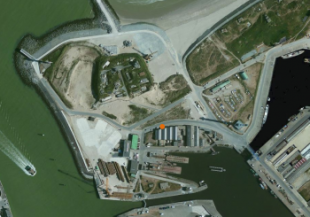
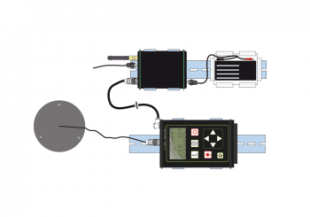
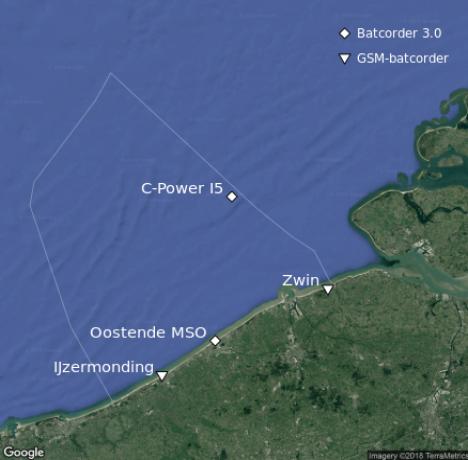
Left top: BatCorder at MSO (orange dot) - Left bottom: BatCorder system (schematic) (Source: ecoObs) - Right: BatCorder locations
More images related to the BatCorders can be found in the media gallery.
Data
Data can be accessed via the LifeWatch Data Explorer for BatCorder data.
Metadata is available at:
- LifeWatch observatory data: sensor network for bat detection, More
Useful links
- LifeWatch Data Explorer - Batcorder data: Access and explore the LifeWatch data.
Most recent publications
- Zwin Natuur Park (2021). Zwin Natuurrapport 2020. Provincie West-Vlaanderen: Brugge. 207 pp. [link to IMIS record]
- Fojtek, C. (2020). Knock knock who's there? Bat detection along the Belgian coast. MSc Thesis. Faculty of Engineering and Architecture, Ghent University: Gent. xiii, 78 pp. [link to IMIS record]
- Gillebert, D. (2018). Half geautomatiseerde herkenning van vleermuisroepen. MSc Thesis. Universiteit Gent, Faculteit Ingenieurswetenschappen en Architectuur: Gent. 56 pp. [link to IMIS record]
- Lagerveld, S.; Gerla, D.; van der Wal, J.T.; de Vries, P.; Brabant, R.; Stienen, E.; Deneudt, K.; Manshanden, J.; Scholl, M. (2017). Spatial and temporal occurrence of bats in the southern North Sea area. IMARES Wageningen Report, C090/17. Wageningen Marine Research (University & Research centre): Den Helder. 52 pp. [link to IMIS record]
